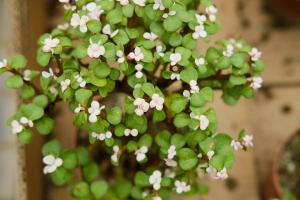Do English Walnut Trees Kill Other Plants?
English walnut trees are popular for their delicious nuts and also for their ornamental appearance. They are large, handsome trees that provide shade and a focal point in gardens and parks. However, there is a common concern about the trees' impact on the surrounding vegetation. Many people wonder whether they are allelopathic, meaning that they release chemicals that inhibit the growth of other plants. In this article, we will explore the issue and try to get to the bottom of the question: do English walnut trees kill other plants?
What is Allelopathy?
Allelopathy is a biological phenomenon where a plant produces chemicals that affect the growth, survival, or reproduction of other organisms. These chemicals can be released through the roots, leaves, or seeds and have different effects depending on the concentration, duration, and proximity of exposure. Allelopathy is a natural process that has evolved as a competitive strategy to reduce competition for resources such as water, nutrients, or sunlight. However, not all plants are allelopathic, and not all allelopathic plants affect all other organisms equally.
Are English Walnut Trees Allelopathic?
English walnut trees are known to produce a chemical called juglone, which is toxic to certain plants. Juglone is concentrated in the leaves, bark, and roots of the tree and can be leached into the soil. The toxicity of juglone depends on several factors, such as the amount of the chemical released, the pH of the soil, and the susceptibility of the plant. Some plants, such as black walnut, are highly allelopathic and can kill or stunt the growth of other plants within their root zone. However, English walnut trees are considered to have a moderate level of allelopathy, which means that they do not usually kill other plants but may inhibit their growth or cause discoloration and yellowing of the leaves.
Which Plants are Affected by English Walnut Trees?
English walnut trees have been shown to affect several species of plants, but the degree of impact varies depending on the plant's sensitivity and duration of exposure. Some plants that are known to be sensitive to juglone and may exhibit symptoms such as wilting, leaf drop, or death include tomato, potato, pepper, eggplant, blueberry, azalea, rhododendron, and many annuals and perennials. On the other hand, some plants that are tolerant of juglone and can coexist with English walnut trees include grasses, sedges, ferns, and some trees and shrubs such as honey locust, mulberry, hickory, and dogwood.
How to Minimize the Impact of English Walnut Trees on Other Plants?
There are several ways to minimize the impact of English walnut trees on other plants, depending on the situation and the extent of the problem. One method is to plant tolerant species or cultivars that are known to thrive in the presence of juglone. This can be achieved by doing research before planting and choosing plants that are recommended for allelopathic conditions. Another method is to create barriers that prevent the roots of the English walnut tree from reaching the other plants. This can be done by installing physical barriers such as plastic or metal sheets, or by using natural barriers such as root barriers or deep mulching. Another option is to remove the fallen leaves, nuts, and twigs from the area surrounding the English walnut tree, as these are the main sources of juglone release.
Conclusion
Although English walnut trees are allelopathic to some extent and can affect certain plants, they are not usually considered deadly or harmful if managed properly. By understanding the mechanisms of allelopathy and choosing the right plants, it is possible to create a healthy and diverse garden that includes English walnut trees and other species. The key is to be aware of the potential impact and take preventive measures that minimize the risk of damage. If you are unsure whether your plants are affected by English walnut trees, consult a local horticulturist or arborist for advice.

 how many times do yo...
how many times do yo... how many planted tre...
how many planted tre... how many pine trees ...
how many pine trees ... how many pecan trees...
how many pecan trees... how many plants comp...
how many plants comp... how many plants can ...
how many plants can ... how many plants and ...
how many plants and ... how many pepper plan...
how many pepper plan...































